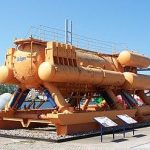We know that 71% of the earth’s surface is made up of water which makes it the world’s largest ecosystem holding 99% of all the habitable space in the world. The possibility to picture its vastness remains incomprehensible and a whopping 95% of the underwater world remains undiscovered today.
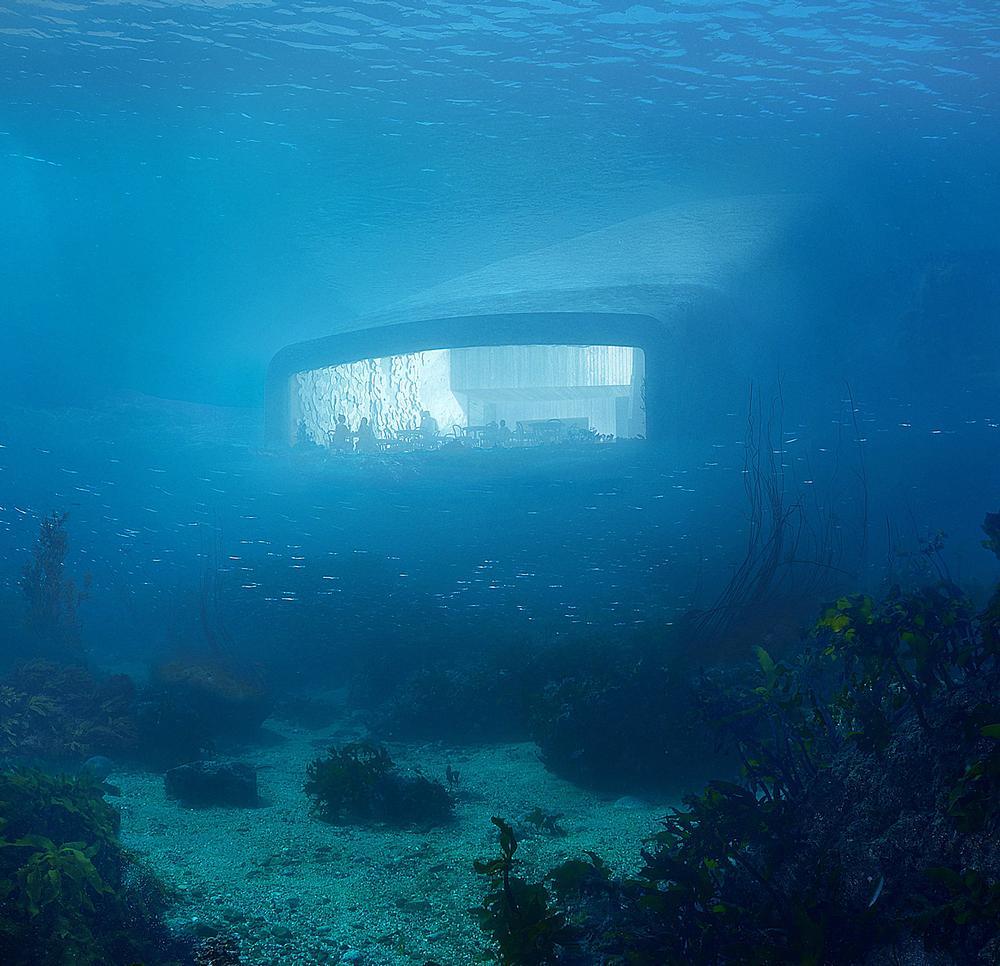
These staggering numbers have fascinated the human race for centuries together. In an attempt to encounter this unknown world of possibilities several studies and research attempts are continuously being made. The limited possibilities to access and explore underwater have led to unparalleled creation and ideation of the underwater world.
Today, we come across hyperrealistic science fiction or fairy tale world like underwater structures made by architects to experience life amongst aquatic beings. These structures are often in the form of hotels, restaurants, museums and exhibits to satisfy the human fascination of underwater experiences. These real-world structures become a portal to be inside a Disney movie like The Little Mermaid and The Lost City of Atlantis and explore the possibility of civilization under the deep waters.
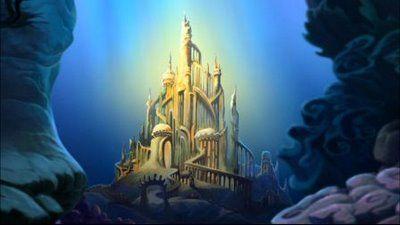
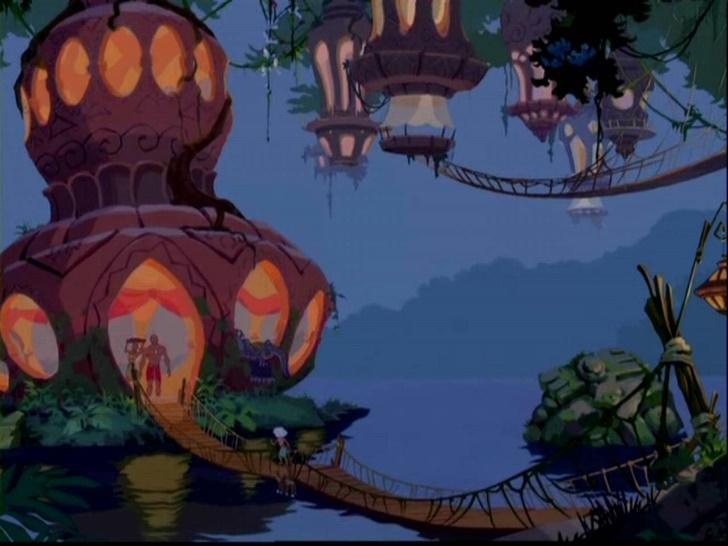
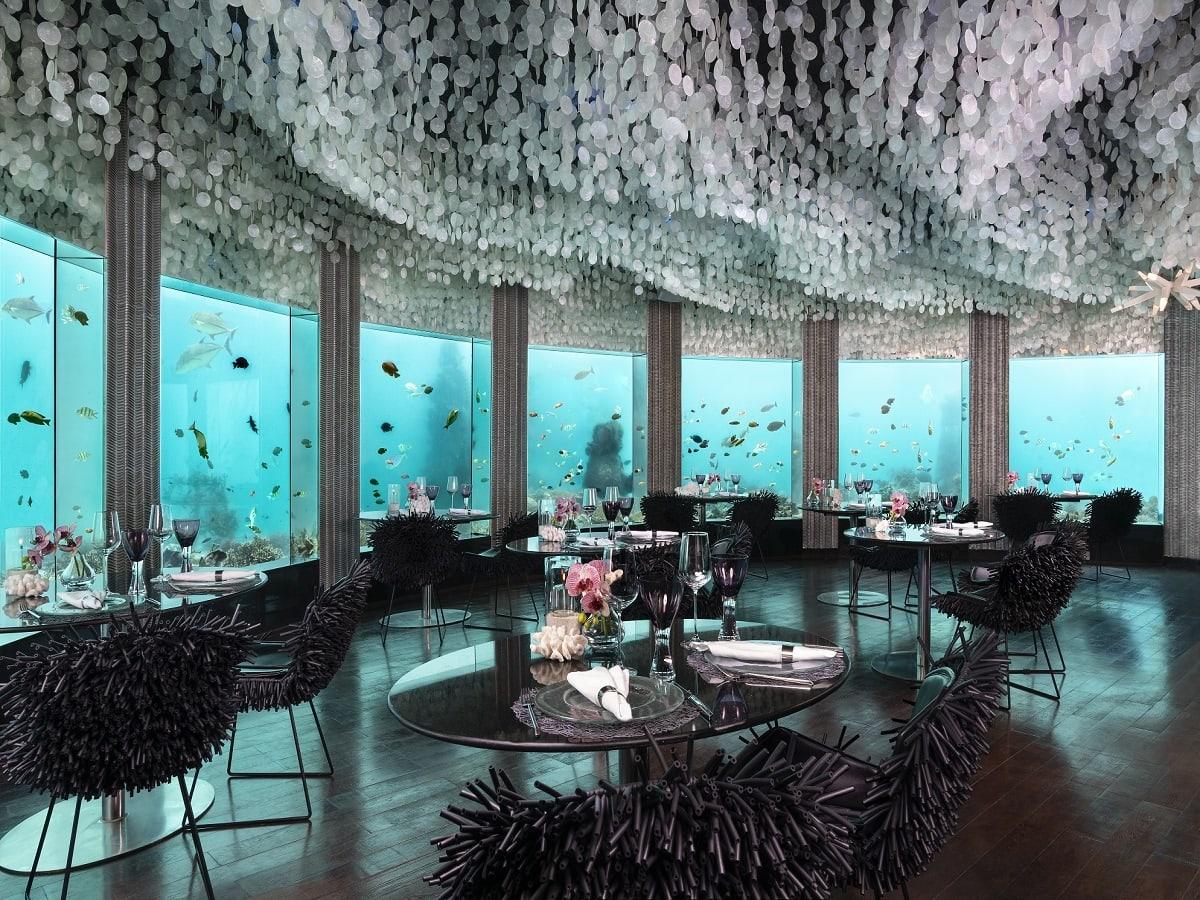
Early Stages of Underwater Architecture

The first underwater structures are believed to be products of our early civilizations’ wish for growth. In an attempt to explore further and discover new worlds beyond homelands, connections were built across waterbodies. These connections were often built using a blend of natural materials that led to innovation to connect two lands separated by a water body. These microscale inventions led to humankind’s step into the world of underwater architecture. These innovations are today known to us as bridges, harbours, dockyards and marine infrastructure. An account of the presence of this economic and social growth-focused infrastructure can be found in ancient Egyptian, Indian, and Greek civilizations as early as 4000 BCE.
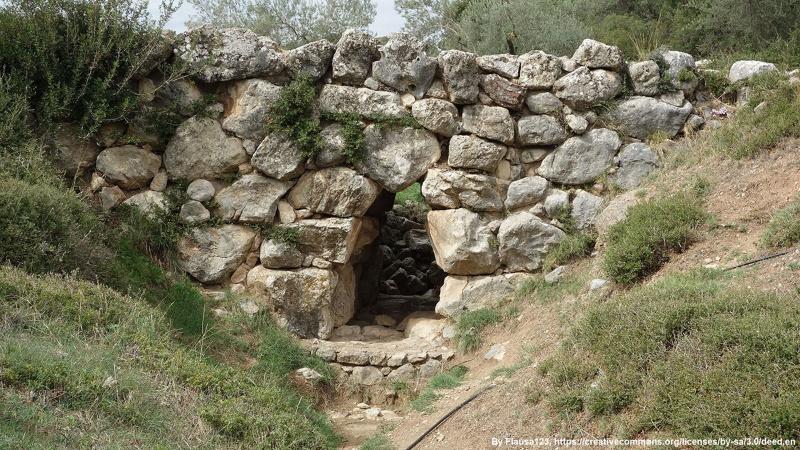

-
Arkadiko Bridge, Greece (1300 BC) and Tarr’s Steps Bridge, England (1400 AD)
The oldest known bridge in history is the Arkadiko or the Kazarma Bridge located in Argolida, Greece. The construction of this bridge dates back to 1300 BC in the Mycenaean period. The bridge is structurally supported by a corbelled arch vault and made with Cyclopean blocks stacked without mortar.
Exploration of Underwater Habitats
To clearly understand the world of Underwater habitats it’s important to understand the evolution of underwater architecture. This development took place in stages and led to clear categorisation. Let’s look at the types of underwater habitats which also tell us about their evolution.
-
Floating
The floating habitat is partially underwater and above the water’s surface. This kind of structure allows mobility to take place horizontally along the surface of the water.
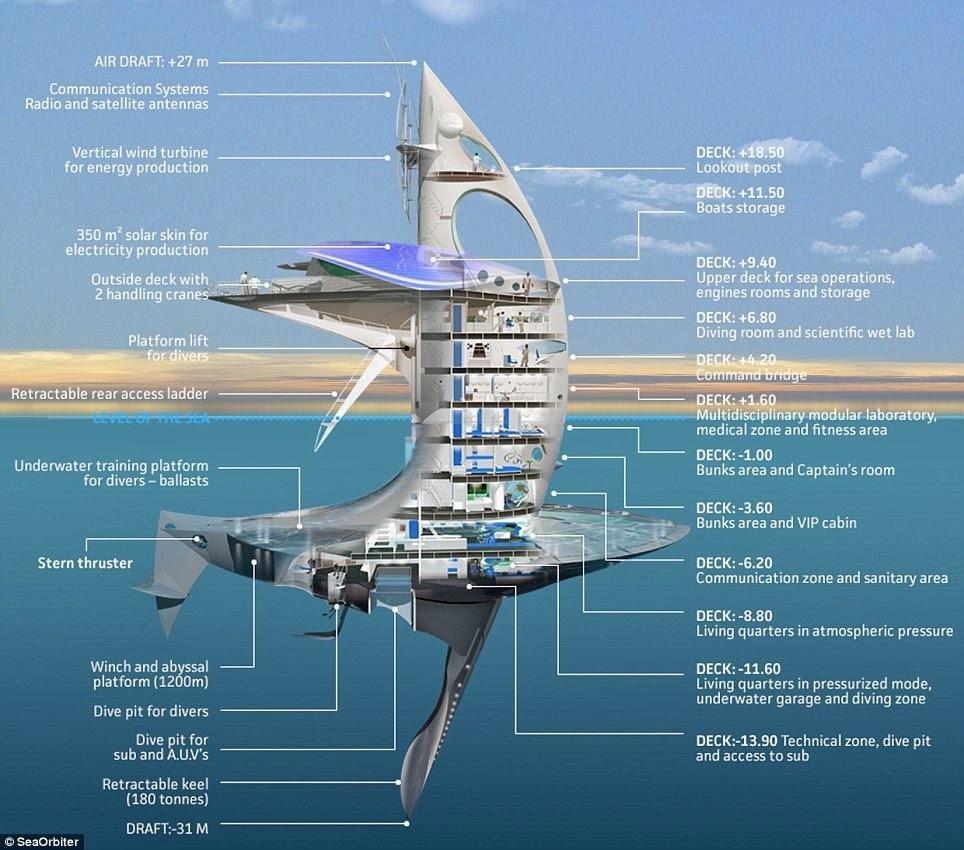
Example 1 : Sea Orbiter
The Sea Orbiter is conceived to be the world’s first oceanic station. This research station aims to serve multiple purposes including a mobile underwater habitat, a permanent scientific laboratory, and a multi-purpose underwater base for scientific experiments and underwater study. The structure also envisions becoming an educational and global communication platform.

-
Access shaft to surface
In this category of habitat, one can access underwater structures via a shaft from the underwater surface. However, this underwater structure can be submerged to a limit of restricted meters below the water’s surface. However, the atmospheric pressure can be normalised for the visitors inside so that they don’t undergo any decompression.

Example 1 : Ithaa, Maldives
Ithaa is the world s first undersea restaurant with coral gardens paradoxically. This fine dining restaurant is an example of an access shaft to the surface system of aquatic habitats. This undersea restaurant is located 5 metres (16 ft) below sea level at the Conrad Maldives Rangali Island in Alif Dhaal Atoll in the Republic of Maldives. The restaurant was designed and constructed by a New Zealand-based design consultancy named M.J. Murphy Ltd. This restaurant opened on April 2005. A spiral entrance inside a thatched pavilion leads us down to the restaurant.

-
Semi- Autonomous
Semi-autonomous habitats are accessible by diving into the water. However, the energy and oxygen are supplied through a thin cord stretching above the water’s surface. This thin cord is called an umbilical cord technically Most of the scientific stations are built in this way to allow the scientists and analysts to access underwaters for study.
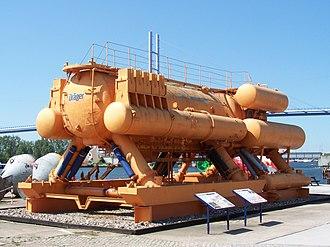
Helgoland Underwater Laboratory, 1968: The Helgoland Underwater Laboratory (UWL) is an underwater habitat. It was built in Lübeck, Germany in 1968 and was the first device in the world built to study life in cold waters. It is an example of a semi-autonomous system of underwater habitat.

-
Autonomous
The autonomous type of underwater structure has reserves of energy and breathing gas. It can manoeuvre itself vertically. This system can be related through the example of submarines, and atmospheric diving suits. This gives one the freedom and time to explore the underwaters. However, the limited availability of resources ensures a timely environmental connection with the surface above.
Example 1 : Transbay Tube, California
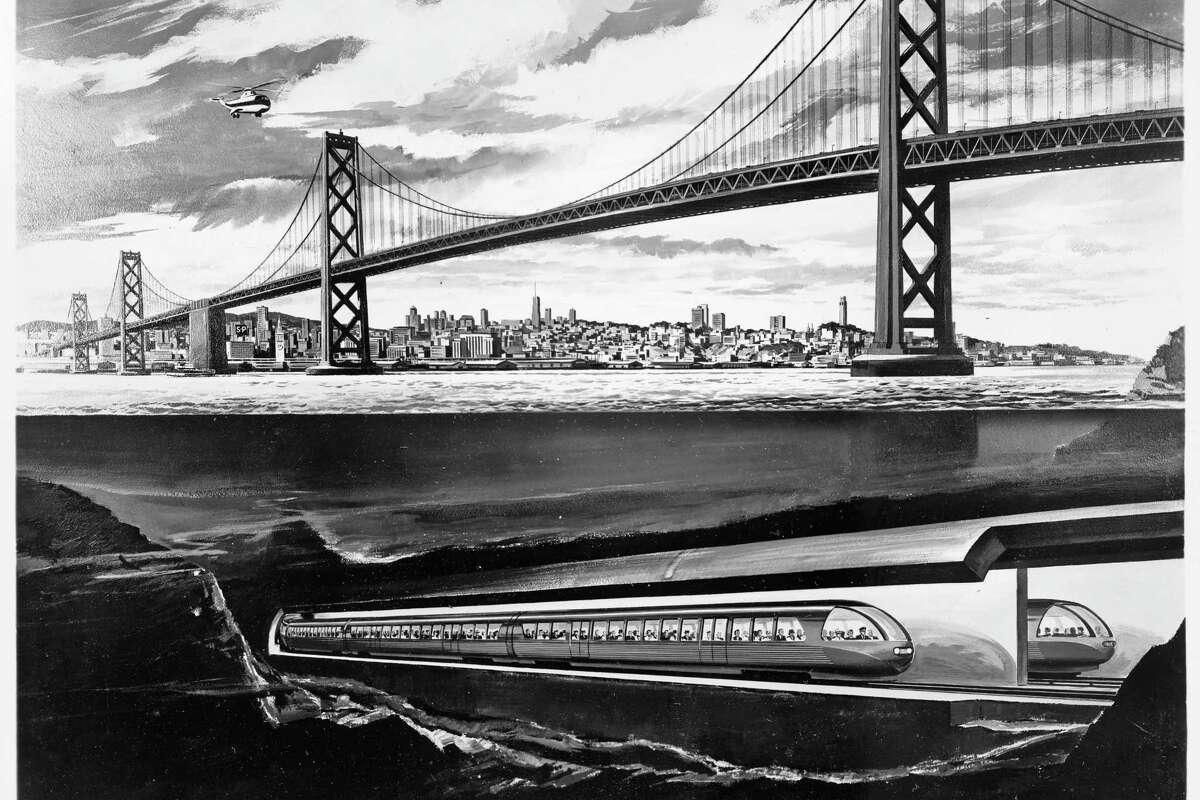
The Transbay Tube, between San Francisco and Oakland, California
The Transbay Tube is an underwater rail tunnel that connects San Francisco and Oakland. It was constructed in 1974 using the immersed tunnel technique. About 57 of its components were built off-site, and then transported and submerged into water. Each component was lowered and placed and connected by underwater divers.
Example 2 : Jules Undersea Lodge, Key Largo, Florida
Jules Undersea Lodge was built in Florida as a research lab in the year 1968. It was a structure that was completely submerged underwater. This research laboratory was converted into a luxury hotel to accommodate tourists to explore life below sea level. This made this structure the first of its kind. One can dive into the sea with a scuba diving kit to reach the lodge. The floor plan is a combination of two cuboidal cylinders on either side of a rectangular space. As the entire construction is underwater, compressed air fills the lodge so that it doesn’t flood. Its entrance is a pool through which divers can surface into the wet room.
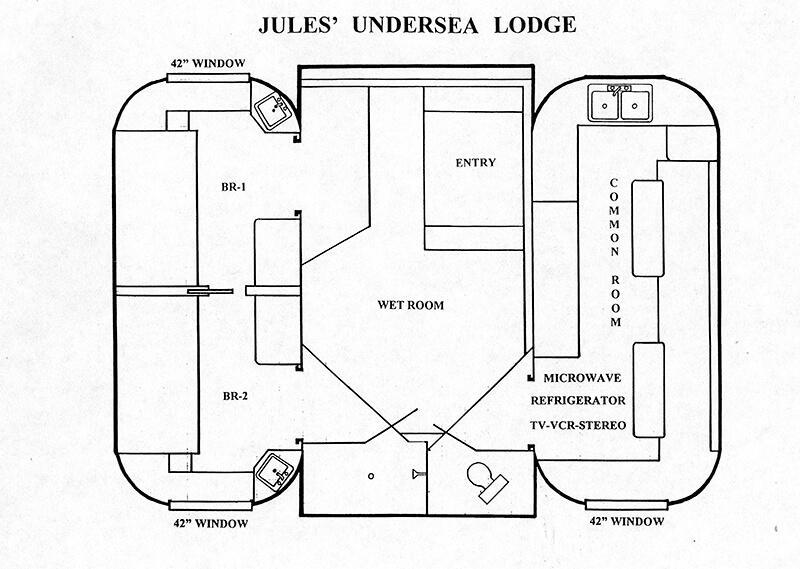
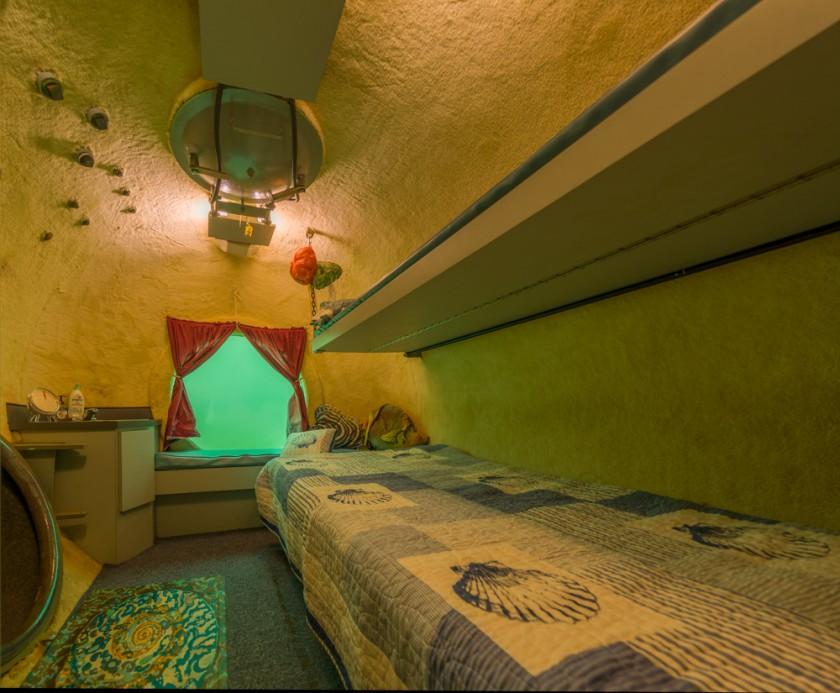
Research and References :
Fava, M. (2022). 2022: How much of the Ocean have we explored to date. [online] Ocean Literacy Portal. Available at: https://oceanliteracy.unesco.org/ocean-exploration/#:~:text=In%20fact%2C%20most%20of%20the.
Paschoa, C.C.P. is M.T.R. correspondent in B.E. (2014). A Short History of Underwater Labs. [online] Marine Technology News. Available at: https://www.marinetechnologynews.com/blogs/short-history-of-underwater-labs-700486
Wikipedia. (2023). Underwater habitat. [online] Available at: https://en.wikipedia.org/wiki/Underwater_habitat#:~:text=Conshelf%20I%20(Continental%20Shelf%20Station
S, A. (2023). 10 unique underwater architecture around the world. [online] Parametric Architecture. Available at: https://parametric-architecture.com/10-unique-underwater-architecture-around-the-world/
Messy Nessy Chic. (2013). Remains of an Underwater Habitat left by 1960s Sea Dwellers. [online] Available at: https://www.messynessychic.com/2013/05/27/remains-of-an-underwater-habitat-left-by-1960s-sea-dwellers/
Wikipedia. (2021). Ithaa. [online] Available at: https://en.wikipedia.org/wiki/Ithaa.
Hartlaub, P. (2023) When science fiction became reality at the bottom of the Bay: Incredible transbay tube construction photos, San Francisco Chronicle. Available at: https://www.sfchronicle.com/oursf/article/When-BART-made-science-fiction-into-reality-The-17026763.php












